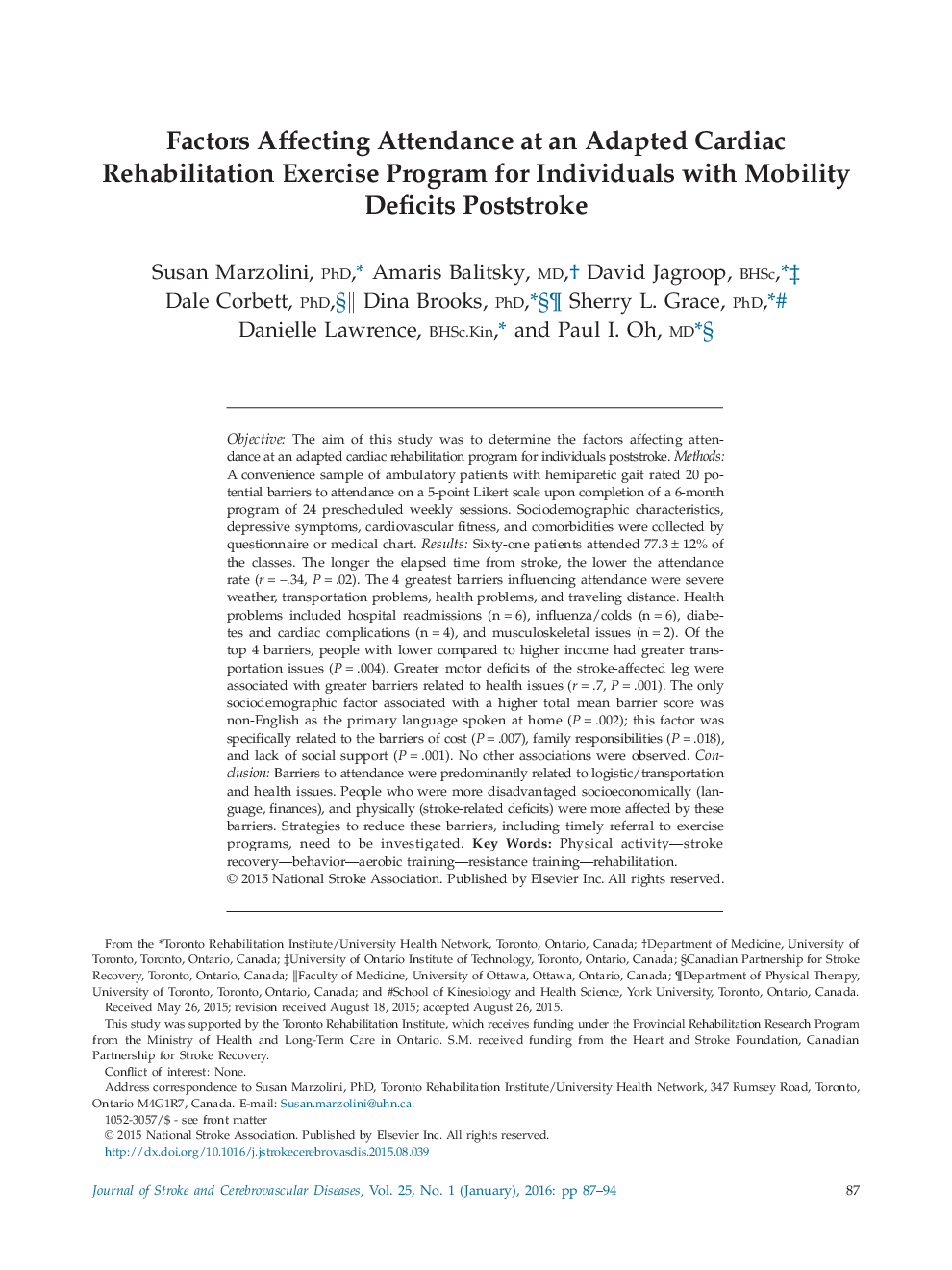| کد مقاله | کد نشریه | سال انتشار | مقاله انگلیسی | نسخه تمام متن |
|---|---|---|---|---|
| 2702324 | 1144529 | 2016 | 8 صفحه PDF | دانلود رایگان |
ObjectiveThe aim of this study was to determine the factors affecting attendance at an adapted cardiac rehabilitation program for individuals poststroke.MethodsA convenience sample of ambulatory patients with hemiparetic gait rated 20 potential barriers to attendance on a 5-point Likert scale upon completion of a 6-month program of 24 prescheduled weekly sessions. Sociodemographic characteristics, depressive symptoms, cardiovascular fitness, and comorbidities were collected by questionnaire or medical chart.ResultsSixty-one patients attended 77.3 ± 12% of the classes. The longer the elapsed time from stroke, the lower the attendance rate (r = −.34, P = .02). The 4 greatest barriers influencing attendance were severe weather, transportation problems, health problems, and traveling distance. Health problems included hospital readmissions (n = 6), influenza/colds (n = 6), diabetes and cardiac complications (n = 4), and musculoskeletal issues (n = 2). Of the top 4 barriers, people with lower compared to higher income had greater transportation issues (P = .004). Greater motor deficits of the stroke-affected leg were associated with greater barriers related to health issues (r = .7, P = .001). The only sociodemographic factor associated with a higher total mean barrier score was non-English as the primary language spoken at home (P = .002); this factor was specifically related to the barriers of cost (P = .007), family responsibilities (P = .018), and lack of social support (P = .001). No other associations were observed.ConclusionBarriers to attendance were predominantly related to logistic/transportation and health issues. People who were more disadvantaged socioeconomically (language, finances), and physically (stroke-related deficits) were more affected by these barriers. Strategies to reduce these barriers, including timely referral to exercise programs, need to be investigated.
Journal: Journal of Stroke and Cerebrovascular Diseases - Volume 25, Issue 1, January 2016, Pages 87–94
